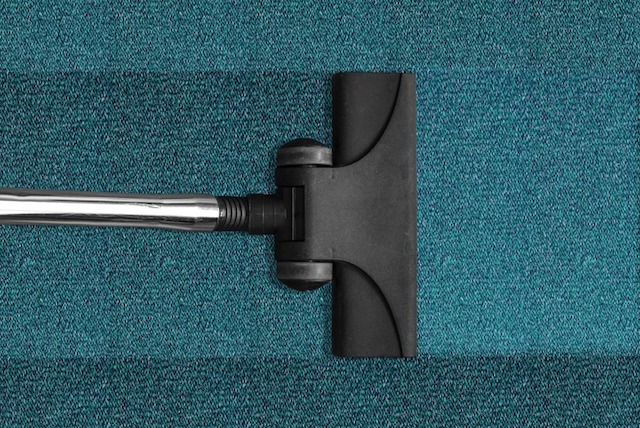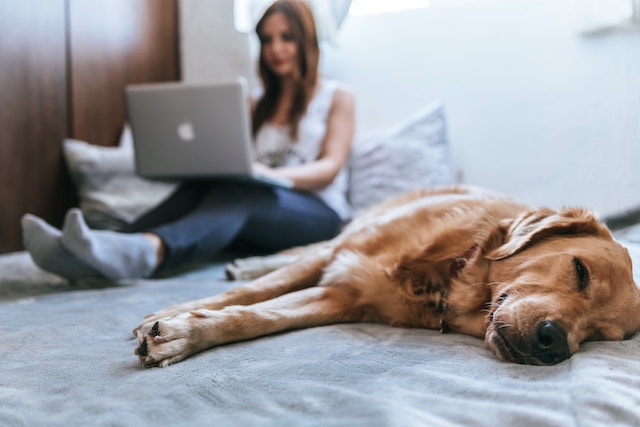
“Pets or no pets?”
This is a question that many landlords in Alberta who are just starting out ask themselves. In Canada, a very large number of tenants own at least one pet. Additionally, the number keeps on rising year after year.
In this article, Real Canadian Property Management will provide you with tips to make renting to tenants with pets successful.
Benefits of Allowing Pets into Your Rental Property
Allowing pets into your property can provide you a number of benefits. First and foremost, it can help increase the demand for your rental. This is because of the sheer number of properties that allow pets.
Secondly, tenants with pets usually rent long-term. This is due to the fact that only a few properties allow pets. As such, tenants will likely stay longer as there aren’t as many options out there for them.
Thirdly, you may be able to attract responsible tenants. If someone is mature enough to care for their animal, there is a good chance they will accord the same respect to your property.
Things to Do If You Do Decide to Accept Pets
There are four important things that you should do if you want to be successful in renting to tenants with pets. You should:
- Understand the different types of pets tenants may bring into your property. Common domesticated animals include cats, dogs, rabbits, guinea pigs, fish, birds, gerbils, hamsters, and small reptiles.
- Decide which pets you will accept and mention that in your lease agreement.
- Have clear rules in regard to which areas pets are allowed.
- Remind the pet owners that they are responsible for caring for their pets and ensuring all their needs are taken care of.
Tips for Accepting Pets
Now that you are ready to accept pets into your property, the following are some things you should consider doing to make it a success:
Tip #1: Charge a higher rent.
Landlords can charge more rent if they allow pets. In fact, landlords who allowed tenants to keep pets earned an extra $222 a month on average as compared to landlords that didn’t allow them.
Landlords who didn’t mind large-breed dogs earned an extra $100 a month on average over those that had enforcement on weight restrictions.
Of course, the extra income will vary depending on an area’s demand and supply.
Tip #2: Consider charging a pet fee.
Many landlords that allow pets usually impose an extra fee on top of the usual security deposit. Such landlords reason that pets will usually add wear and tear to the unit. Before implementing such a policy, it’s important to understand a few important things first.
To begin with, landlords in Alberta are permitted to charge a non-refundable pet fee on top of the security deposit.

Secondly, the pet fee must be reasonable. That is, between the range of $200 and $300 per year.
Tip #3: Require proper vaccinations, licenses, and identification.
Ensure that your tenants know that their pets must wear proper identification tags, which should include proof of vaccinations.
Tip #4: Only allow pets that you have approved.
This is a mistake that many landlords usually tend to make. They allow pets but forget to screen them.
Before approving a certain type of pet, the following are some questions you could ask:
- What type do you have?
- How long have you had them?
- Who will care for your pet when you go away on business or vacation?
- May I contact your current landlord to discuss your pet further?
- Did your pet cause damage at your current address? If so, how were the damages handled?
- How do the animals get along with other people or animals?
- Has the pet undergone any obedience training?
- Has the animal been neutered or spayed?
Finally, tell your tenant that your approval is conditioned upon their continued compliance with the terms of the pet policy.
Tip #5: Provide a pet-friendly space.
There are some practical steps you can take to make your property as pet-friendly as possible. Here are some of them:
- Opt for aluminum fittings instead of wooden ones
- Ensure any water features are safe for pets
- Remove carpeting and replace it with tiles

- Add feeding stations and other pet-friendly amenities
- Add pet-friendly finishing in your unit
- Install pet-friendly floors
Tip #6: Inspect the property regularly.
Regular property inspections are key to running a successful rental property in Grande Prairie, especially if your tenant owns a pet.
Tip #7: Make common areas and units allergy-friendly.
The following are some tips to help you in this regard:
- Always clean your air systems when a tenant vacates the unit.
- Check and clean HVAC systems in areas that have high humidity to prevent mold growth.
- Install ceramic, linoleum, or other flooring option that’s sealed and easy to clean.
- Consider using acrylic paints or washable oil on the walls. Avoid absorbent materials like cork or wallpaper.
- Make sure all holes in walls are sealed immediately behind the faceplate to prevent air leaking out.
The Bottom Line
Allowing pets in your Grande Prairie, Alberta rental property is a great way to minimize vacancies, as a lot of tenants own pets. Just ensure to protect your investment by having a great pet policy.
